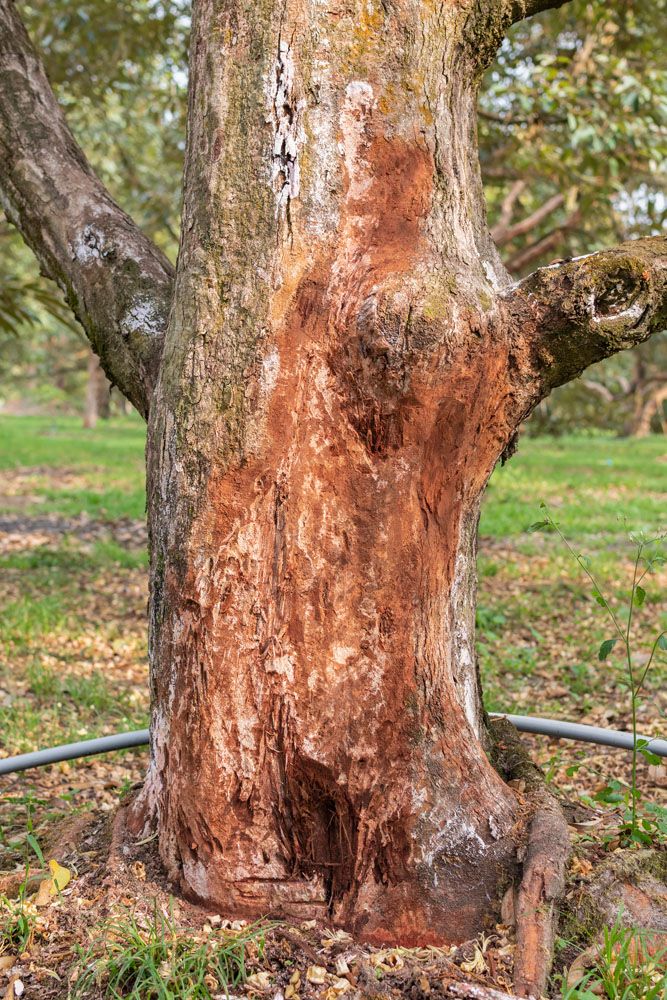
Phytophthora Root Rot
Root rot (Phytophthora megasperma)
Is your tree slowly but steadily decaying? Phytophthora disease, often known as a water mold, causes root rot and can cause your tree’s trunk to blacken, dieback, or droop. Phytophthora disease causes root rot, which affects everything from crops to personal gardens all around the world. When this condition is identified, it may be managed with accessible medications and preventative actions.
What is Phytophthora?
Phytophthora (root rot) disease is a plant pathogen that occurs by infecting the roots of trees and plants. Water irrigation, gardening equipment, and human activity are all used to transfer this illness from plant to plant. Phytophthora is currently classed as an oomycete, a life form linked to fungi and algae. There are few early warning indicators, and most plants seem drought stressed despite appropriate irrigation. During the first warm weather following infection, some plants wilt and die due to water stress.
Symptoms and Diagnosis:
As the leaves die, they will seem drought-stressed, developing a drab green, yellow, red, or purple color. Infected trees may live for a few years before succumbing to the disease. The bark surrounding the soil line may have discolored. Cutting away the portion of the bark should show a reddish-brown stain beneath it. Because mycelial mats do not form in tissues infected with Phytophthora root rot, the disease signs are different from Armillaria root rot.
Life Cycle:
Root rot-causing as long as wet circumstances exist, Phytophthora species can thrive in the soil for years. Splashing rain, irrigation water, and runoff water can all spread it. Fungi that cause disease can spread through contaminated soil and horticultural equipment. Rot is more prone to apply in the early spring and late fall when the weather is chilly and moist. The spread of root rots is aided by flooding and moist soil conditions lasting 6–8 hours. Infection does not need the presence of wounds.
Control:
Resistant rootstocks, irrigation control, fungicides, and fumigation are all used to combat Phytophthora root rot.
Cultural Control:
When there isn’t enough rain, though, symptoms are more likely to occur.Ensure that the soil is well-drained and that it is not overwatered. Corrective measures may include:
- Increasing watering intervals.
- Moving to alternate middle row irrigation or an alternative irrigation method such as micro sprinklers.
- Laying subsoil tiles if feeder root loss is minor.
Resistant Rootstocks:
Choose resistant rootstocks whenever feasible for replanting or creating new plants, and consider disease tolerance, nematode tolerance, and cold tolerance. Trifoliate orange, swingle citrumelo, citrange, Alemow, and sour orange are the most resistant rootstocks.
Monitoring and Treatment Decisions:
- Dig up some dirt and inspect the feeder roots if a tree on vulnerable rootstock appears strained. P. parasitica should be sampled from July to September, while P. citrophthora should be sampled all year:
- Choose 20 to 40 spots at random within a 10-acre orchard block where Phytophthora tree loss is predicted to be modest to moderate.
- Take a sample near the tree’s drip line or the irrigation emitter, where the roots are concentrated.
- Do not refrigerate or overheat composite samples in a sealed plastic bag.
- Ship to a lab within 24 to 48 hours to assess propagule count per unit of soil and root infection.
- Pesticide treatment may be necessary if Phytophthora populations exceed 15 to 20 propagules per gram of root zone soil. When planting or replanting in Phytophthora-infested soil or using a vulnerable rootstock, fumigation may be an option if no other problems exist.
